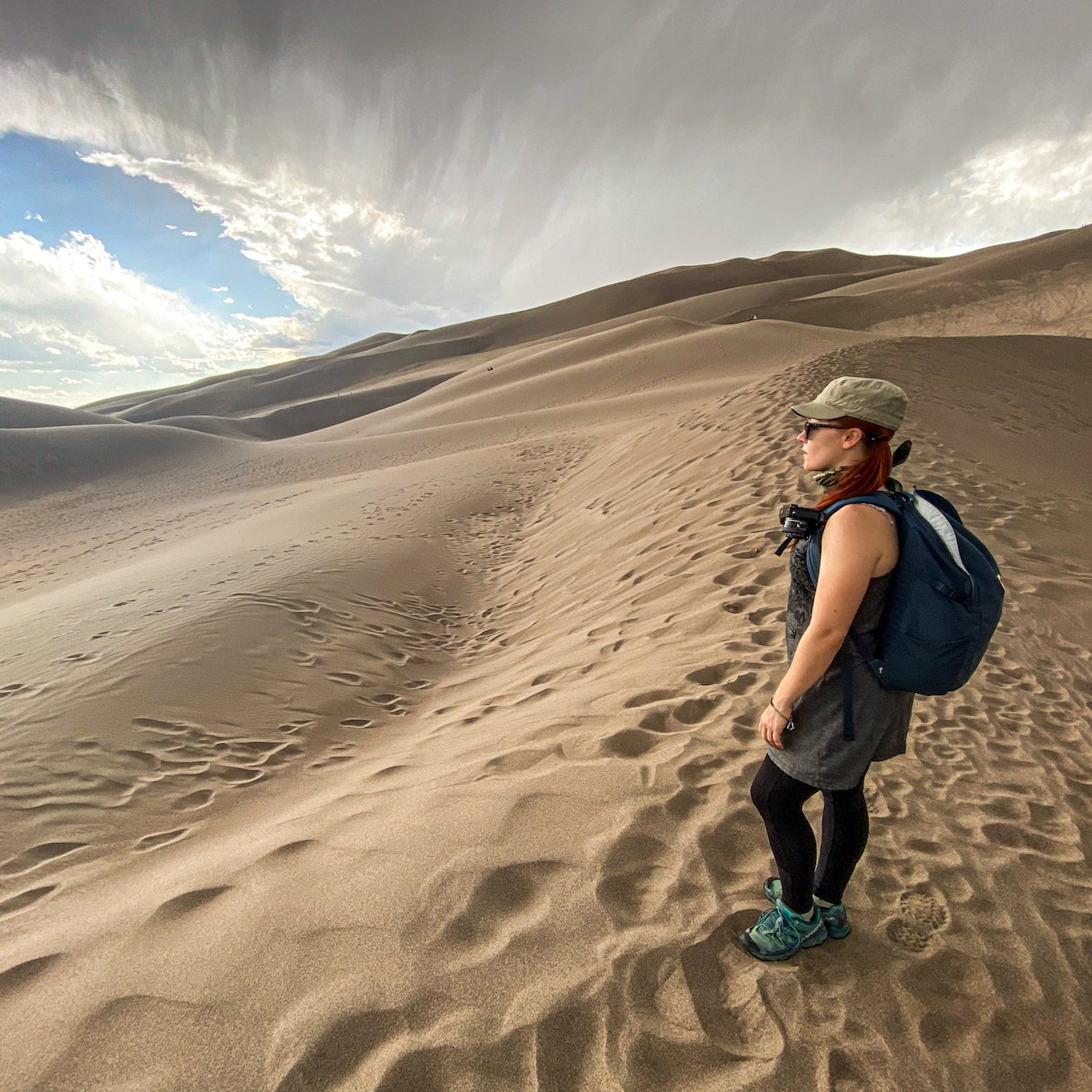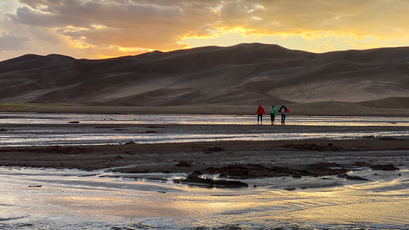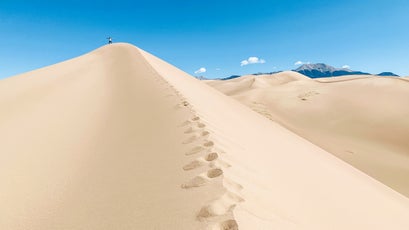62 Parks Traveler started with a simple goal: to visit every U.S. national park in one year. Avid backpacker and public-lands nerd Emily Pennington saved up, built out a tiny van to travel and live in, and hit the road. The parks as we know them are rapidly changing, and she wanted to see them before it’s too late.
Pennington has returned to traveling and is committed to following CDC guidelines during the COVID-19 pandemic to ensure the safety of herself and others. She’s visiting new parks as they open and closely adhering to best safety practices.
At 6 A.M., I ran my fingers across the cocoon of a thick wool blanket to turn off the dental drill of my iPhone’s alarm ringing in my ear. Brian, my boyfriend, practically leapt from his slumber and bonked his head against the insulated metal ceiling of my minivan, stunned awake. Ordinarily, being a dirtbag means doing what you want, when you want, but on that hot June day, we had a special objective. It was summit day.
We sped across the vast desert of southeastern Colorado as the Sangre de Cristo Mountains loomed large ahead of us. Thank God our mission isn’t one of those snaggletoothed fourteeners, I thought to myself. We’re only climbing Star Dune.
Located in the middle of Great Sand Dunes National Park, Star Dune is the tallest dune in North America. It stands 750 feet from base to summit and is a prized peak for any serious hiker visiting this destination.
I parked my van in the main lot near the dune field, strapped on my fully loaded daypack, and set off with my partner for an eight-mile off-trail adventure. Wanting to skip the hubbub surrounding the high dune on the first ridge, we opted for a higher, more remote peak. The park’s directions from the parking lot to Star Dune were simple enough: Hike about two miles south down the Medano creekbed until the massive pyramid-shaped Star Dune comes into view. Follow a ridge to its summit.
As we made our way along the shallow creekbed, I felt a wet squish of water permeate my hiking boots while I tried to hop from dry patch to dry patch, careful not to soak my wool socks. A blister was the last thing I needed, with the hot morning sun already making me wish I’d worn shorts. I looked over at Brian’s bare legs, envious.
At exactly two miles from the starting point, we turned to our right and saw a colossal pyramid dune the color of burnt parchment. When I squinted my eyes just so, a slightly taller summit appeared to hover just beyond. “That’s gotta be it,” I said. The two of us took a sharp turn toward the towering mounds of sand and galumphed up them with about as much grace as a newborn buffalo.
Our progress was often a series of two steps forward, one step back. That’s the maddening thing about hiking in sand—just when you need support, it drops you like a worn-out push-up bra.
Half a mile up the enormous dune field, we came across a set of footprints leading toward the summit. They petered out after 100 yards but were the push we needed to soldier on and up the final 300 vertical feet.
I clawed at the scalding sand with my fingertips to ascend a steep, 45-degree slope and stumbled the last steps to the top. When I finally crested the ridge, my breath was coarse, and my head felt dizzy. I looked around at the expanse of dunes below me, their proportions and distances distorted by the harsh sun.
As I gazed out at the Sangre de Cristos to the southeast, I noticed something peculiar off in the distance. Was it…? A dune higher than this one?
Brian sauntered up his final few steps to the summit and quickly checked Google Maps to confirm that, yes, that other distant dune was the highest in North America. We had come all this way only to climb the wrong one!
That said, we did get killer photos of the mountains, the park’s wilderness, and pristine, untouched sand dunes perfectly sculpted by wind and water. Maybe the dune we climbed was the perfect one after all.
62 Parks Traveler Great Sand Dunes Info
Size: 107,342 acres
Location: Southern Colorado
Created In: 1932 (national monument), 2004 (national park)
Best For: Dune sledding, hiking, stargazing, car camping
When to Go: Due to its high elevation, Great Sand Dunes is best visited in the summer (45 to 80 degrees) and fall (20 to 71 degrees). In the spring (21 to 66 degrees) and winter (9 to 39 degrees), the dunes are often covered in snow.
Where to Stay: Piñon Flats Campground is a great spot for visitors looking to sleep within the park’s boundaries, especially if they wish to stay out late photographing the dunes at sunset. For the more ambitious, backpacking in the dunes and nearby mountains is also allowed—but by permit only. Find more information on that here.
Mini Adventure: In the late-spring and early-summer months, dipping your feet into the shallow waters of Great Sand Dunes’ famous Medano Creek is a fantastic way to cool off after a long day spent sledding down the sand. You can rent sleds (from $21) at the Oasis store, four miles east of the park entrance.
Mega Adventure: Summit Star Dune. Get an early start, then test out your stamina and navigation skills on this eight-mile off-trail trek that takes most hikers six hours to complete. GPS is strongly recommended.




